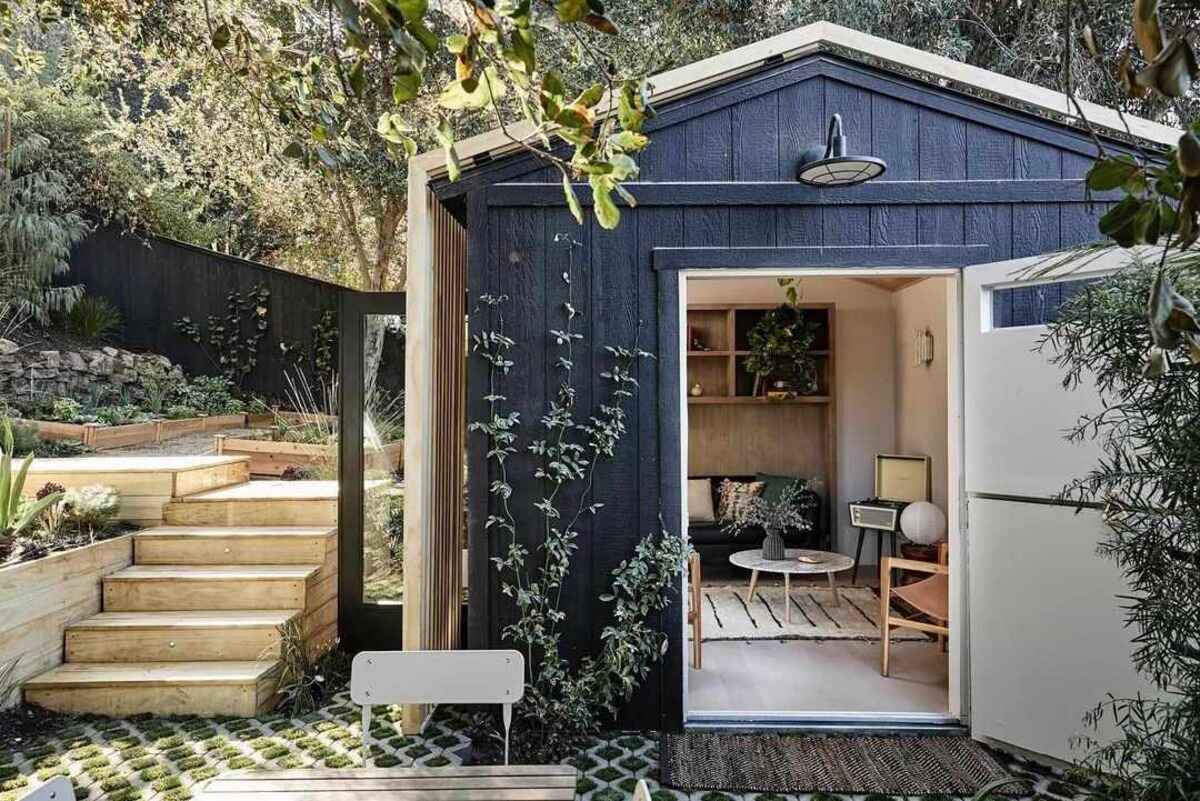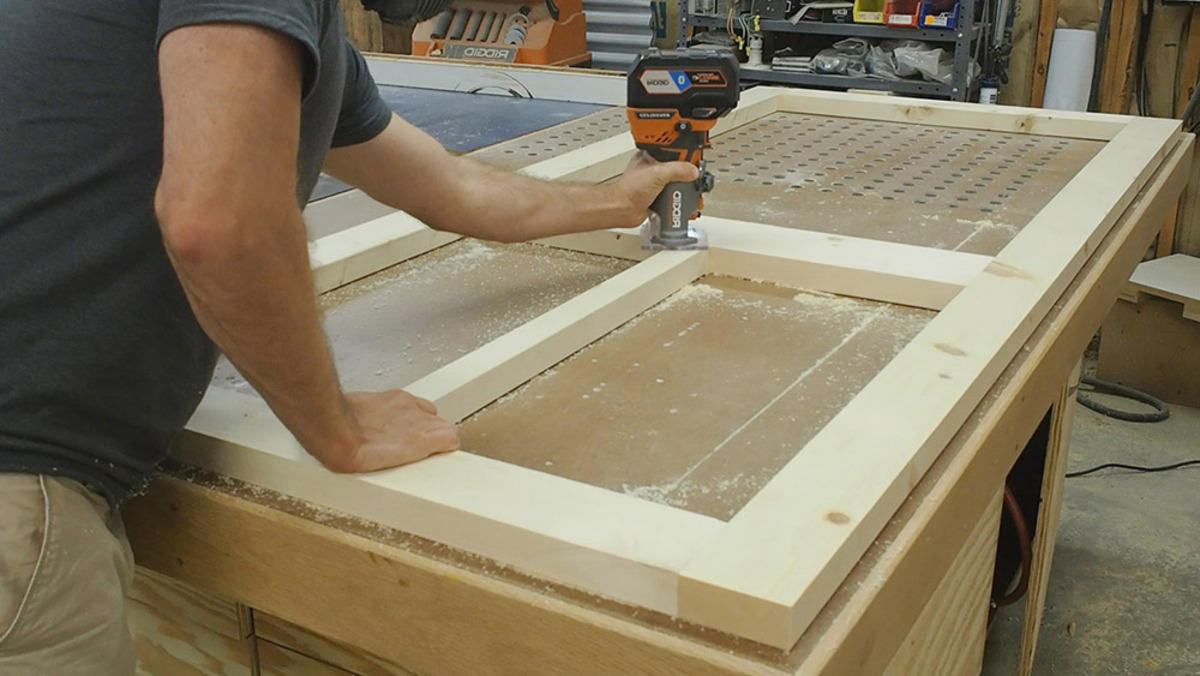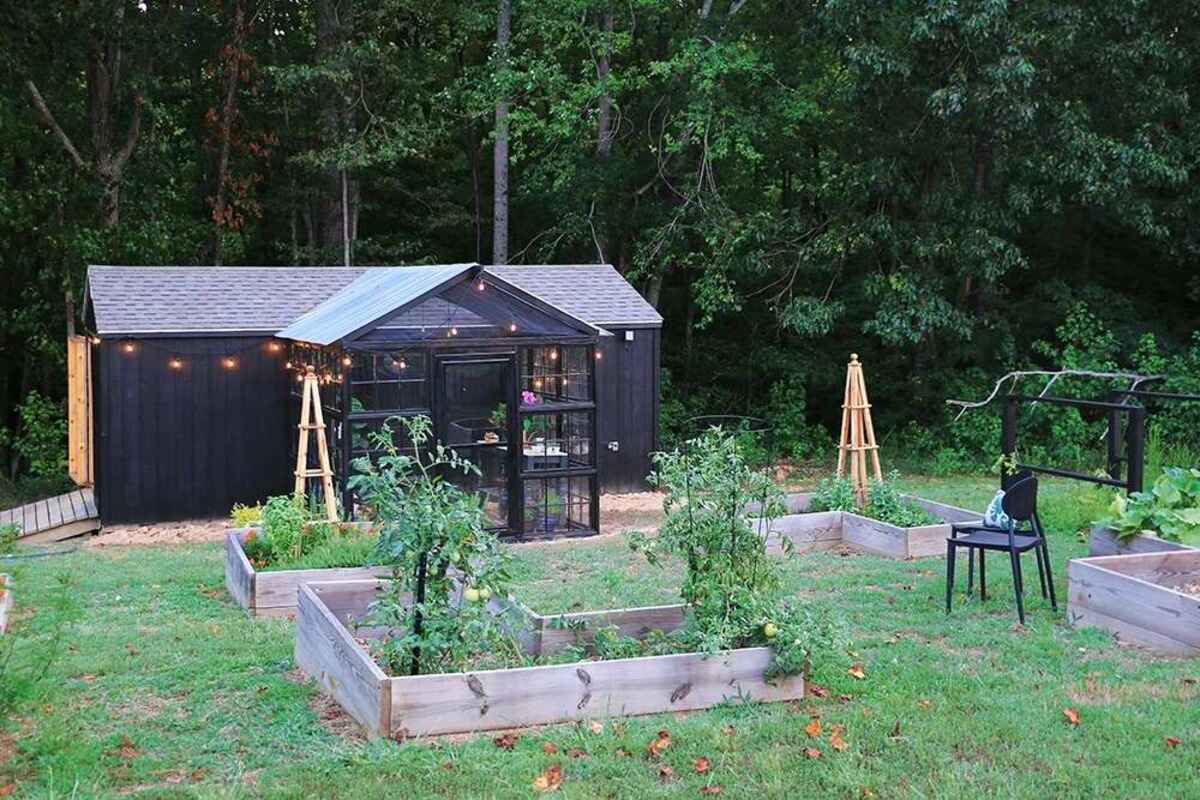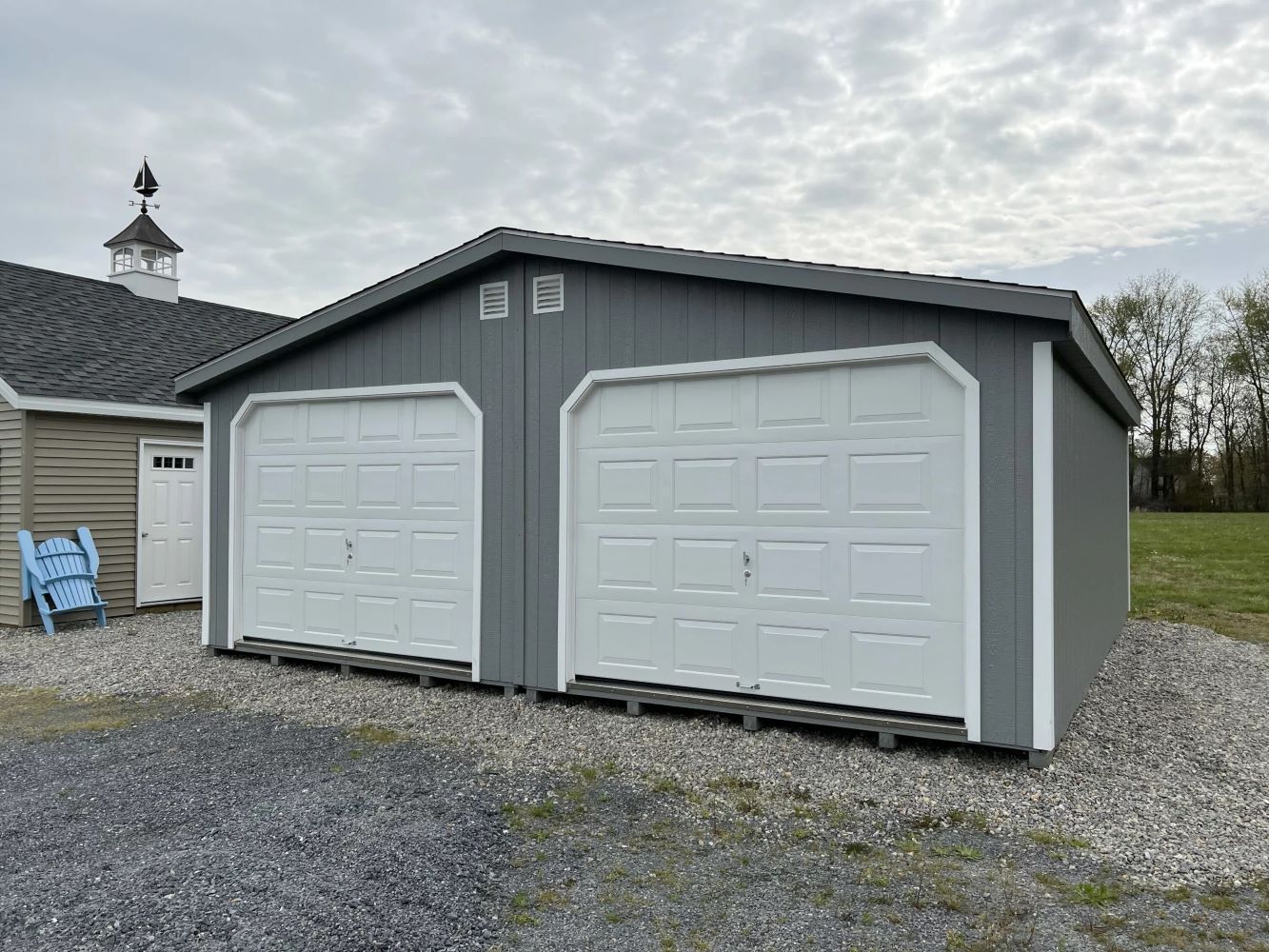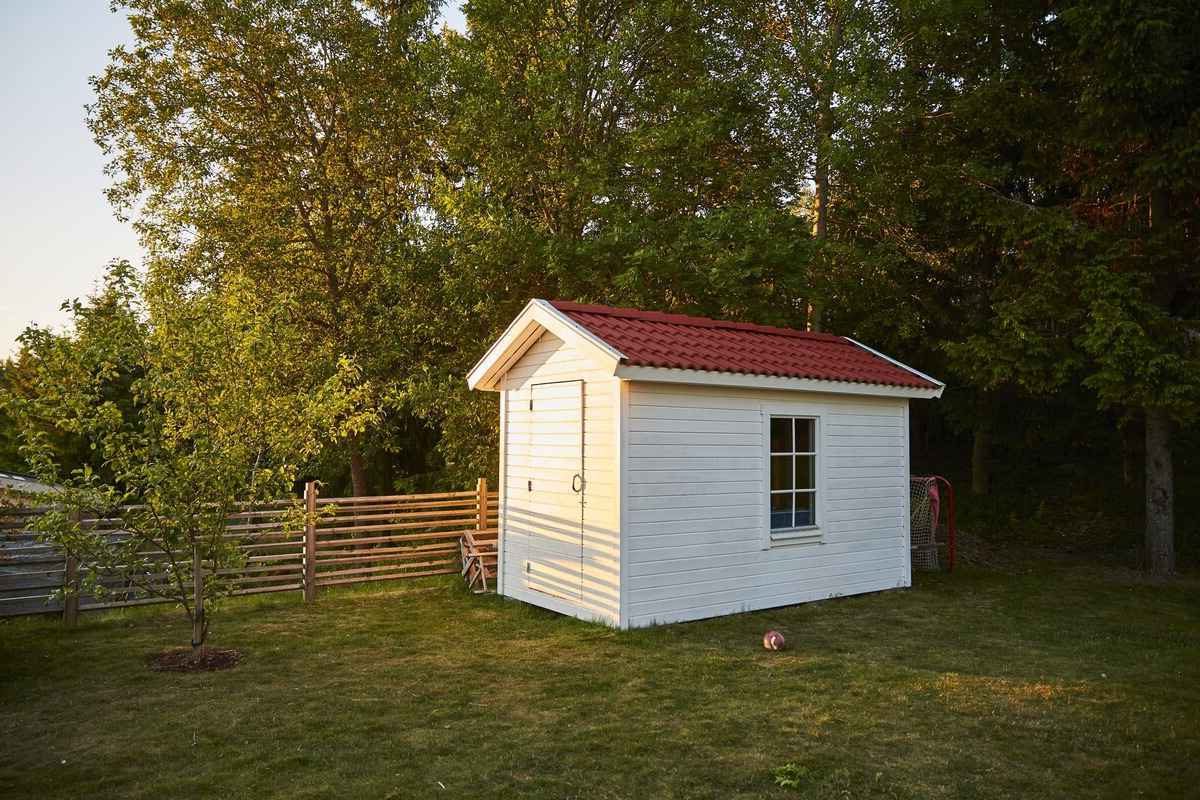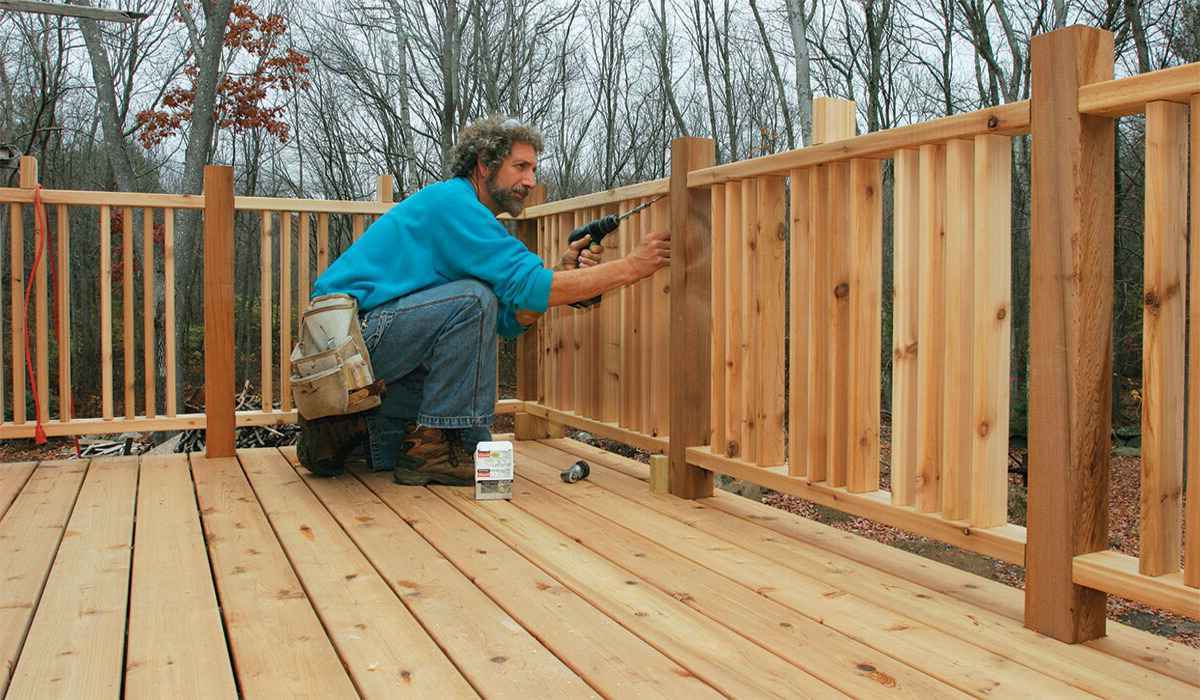Home>Create & Decorate>DIY & Crafts>How To Build A 10X12 Deck
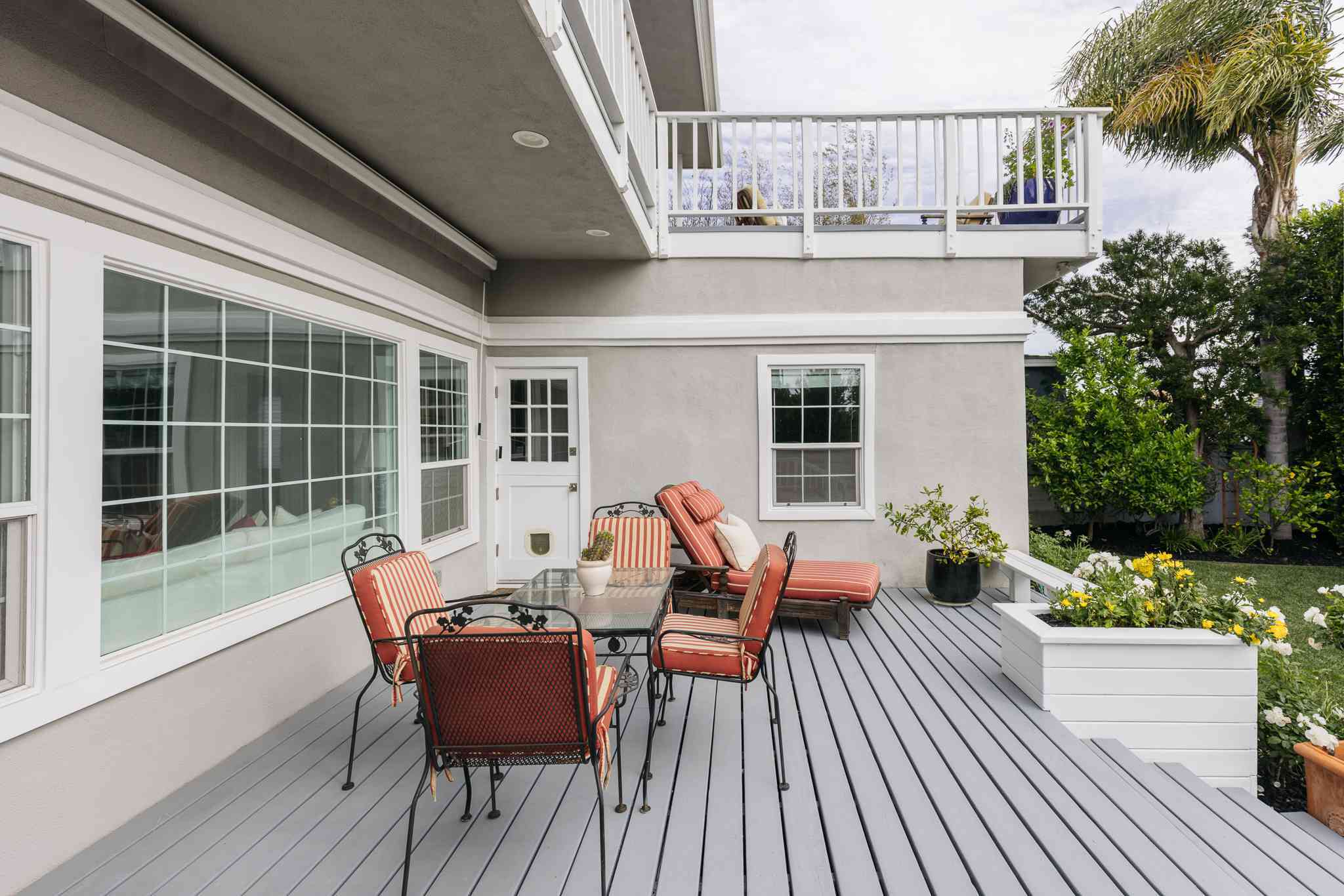

DIY & Crafts
How To Build A 10X12 Deck
Published: February 28, 2024

Senior Editor in Create & Decorate, Kathryn combines traditional craftsmanship with contemporary trends. Her background in textile design and commitment to sustainable crafts inspire both content and community.
Learn how to build a 10x12 deck with our step-by-step DIY guide. Get creative with your outdoor space and enhance your home with our crafts ideas.
(Many of the links in this article redirect to a specific reviewed product. Your purchase of these products through affiliate links helps to generate commission for Twigandthistle.com, at no extra cost. Learn more)
Introduction
Building a 10×12 deck can be an exciting and rewarding DIY project that adds both aesthetic appeal and functional outdoor living space to your home. Whether you envision it as a cozy spot for morning coffee, a gathering place for family barbecues, or simply a peaceful retreat to enjoy the outdoors, a well-constructed deck can transform your backyard into a versatile and inviting oasis.
In this comprehensive guide, we will walk you through the step-by-step process of planning, obtaining permits, gathering materials, preparing the site, building the frame, installing the decking, adding railings and stairs, and completing the finishing touches. By following these detailed instructions, you can confidently embark on this project, knowing that you have the knowledge and guidance to create a sturdy and beautiful deck that complements your home and lifestyle.
Whether you are a seasoned DIY enthusiast or a first-time homeowner eager to tackle a new project, building a deck offers a sense of accomplishment and the opportunity to personalize your outdoor space according to your unique preferences. From selecting the right materials to mastering essential construction techniques, this guide will equip you with the information and insights needed to bring your vision to life.
As we delve into each phase of the deck-building process, we will provide practical tips, highlight potential challenges, and offer creative ideas to inspire your project. Additionally, we will emphasize the importance of proper maintenance to ensure the longevity and safety of your deck, allowing you to enjoy it for years to come.
So, roll up your sleeves, gather your tools, and let's embark on this rewarding journey of creating a 10×12 deck that will become a cherished extension of your home. Let's dive into the planning and design phase to lay the groundwork for a successful and fulfilling deck-building experience.
Read more: How To Build A 12 X 12 Deck
Step 1: Planning and Design
Before diving into the physical construction of your 10×12 deck, it's crucial to invest time in meticulous planning and thoughtful design. This initial phase sets the stage for a successful and well-executed project, allowing you to envision the end result and make informed decisions every step of the way.
Assess Your Needs and Preferences
Begin by considering how you intend to use the deck. Will it primarily serve as an outdoor dining area, a space for relaxation and entertainment, or a combination of both? Understanding your specific needs and preferences will guide the design process and help determine the deck's layout, size, and features.
Determine the Deck's Location
Carefully evaluate your outdoor space to identify the most suitable location for the deck. Factors to consider include sunlight exposure, proximity to the house, existing landscaping features, and potential obstructions. Additionally, assess the terrain and ensure that the chosen area is level or can be easily leveled to accommodate the deck.
Establish a Budget
Setting a realistic budget is essential for making informed choices regarding materials, features, and overall scope. Factor in costs for materials, tools, permits, and any professional assistance you may require. By establishing a clear budget from the outset, you can prioritize expenses and avoid unexpected financial strain as the project progresses.
Read more: How To Build A 10X10 Deck
Create a Detailed Design
With a clear understanding of your needs, preferences, and budget, it's time to create a detailed deck design. Consider elements such as the deck's shape, entry points, railing styles, and any additional features you wish to incorporate, such as built-in seating or planters. Utilize design software, sketching tools, or consult with a professional to bring your vision to life on paper or digitally.
Research Building Codes and Regulations
Familiarize yourself with local building codes, zoning regulations, and permit requirements pertaining to deck construction in your area. Understanding these guidelines is crucial for ensuring compliance and obtaining the necessary permits before commencing the project.
Seek Inspiration and Advice
Gather inspiration from home improvement magazines, online resources, and local deck installations to spark creativity and gather ideas for your own design. Additionally, seek advice from experienced DIYers, professionals, or community forums to gain valuable insights and practical tips for a successful deck-building endeavor.
By dedicating time and attention to the planning and design phase, you lay a solid foundation for the construction process, empowering yourself to make informed decisions and bring your vision of a stunning 10×12 deck to fruition. With a well-thought-out plan in place, you are ready to move on to the next crucial steps of obtaining permits and gathering materials.
Step 2: Obtaining Permits and Materials
Obtaining the necessary permits and gathering high-quality materials are pivotal steps in the journey of building a 10×12 deck. These preparatory tasks lay the groundwork for a smooth and compliant construction process, ensuring that your deck meets safety standards and regulatory requirements while being constructed with durable and reliable materials.
Read more: How To Build A 10X10 Deck For A Hot Tub
Securing Permits
Before embarking on the construction of your deck, it is essential to obtain the required permits from your local building authority. Building codes and regulations vary by region, and obtaining permits is a crucial step to ensure that your deck complies with safety standards and zoning requirements. Failure to obtain the necessary permits can result in costly fines and complications down the line. To initiate this process, contact your local building department to inquire about the specific permits and approvals needed for your deck project. Be prepared to provide detailed information about the proposed deck, including its size, location, and intended use. Once you have a clear understanding of the permit requirements, submit the necessary documentation and fees to obtain the official go-ahead for your project.
Gathering Materials
With permits secured, it's time to gather the materials required to bring your deck to life. High-quality materials are essential for constructing a sturdy and long-lasting deck that can withstand the elements and regular use. When selecting materials, prioritize durability, weather resistance, and overall aesthetic appeal. Key materials for building a deck typically include:
- Pressure-Treated Lumber: This is a popular choice for framing and structural components due to its affordability and resistance to rot and insect damage.
- Decking Boards: Choose from a variety of options, including natural wood, composite, or PVC decking boards, each offering unique benefits in terms of appearance, maintenance, and longevity.
- Fasteners and Hardware: Select corrosion-resistant screws, nails, and connectors designed for outdoor use to ensure the structural integrity of your deck.
- Concrete and Post Anchors: These are essential for securing the deck's support posts to the ground, providing stability and structural reinforcement.
- Railings and Balusters: Depending on your design preferences and local building codes, you may need to incorporate railings and balusters for safety and aesthetic purposes.
Before making any purchases, carefully calculate the quantities of materials needed based on your deck design and dimensions. Consider consulting with a knowledgeable professional at your local home improvement store to ensure that you acquire the right materials for your specific project.
By diligently obtaining the necessary permits and sourcing high-quality materials, you set the stage for a successful and compliant deck construction process. With permits in hand and materials at the ready, you are well-prepared to move on to the next phase of preparing the site for the construction of your 10×12 deck.
Step 3: Preparing the Site
Preparing the site for the construction of your 10×12 deck is a critical phase that sets the groundwork for a stable and long-lasting structure. This step involves assessing the terrain, clearing the area, and ensuring proper drainage and support for the deck's foundation. By meticulously preparing the site, you create an optimal environment for the construction process and mitigate potential issues that could compromise the integrity of your deck in the future.
Evaluate the Terrain
Begin by thoroughly evaluating the terrain where the deck will be constructed. Ensure that the ground is level and free from any obstructions such as large rocks, tree roots, or debris. If the ground is not level, consider grading the area or using retaining walls to create a stable foundation for the deck. Additionally, assess the soil composition to determine its load-bearing capacity, as this information will influence the design and support requirements of the deck's foundation.
Clear the Area
Clearing the designated area is essential to create a clean and unobstructed space for the deck. Remove any vegetation, such as grass, weeds, or shrubs, and excavate the topsoil to the appropriate depth, taking into account the thickness of the deck's support structure. Clearing the area also involves addressing any underground utilities or obstacles that may interfere with the construction process, ensuring a safe and unobstructed work environment.
Establish Proper Drainage
Effective drainage is crucial for preserving the integrity of your deck by preventing water accumulation and potential moisture-related issues. Assess the natural drainage patterns of the site and make provisions to redirect water away from the deck area. This may involve incorporating grading, installing drainage systems, or utilizing permeable materials to promote water runoff and minimize the risk of water damage to the deck's structure and foundation.
Install Support Footings
The installation of support footings is a fundamental aspect of preparing the site for your deck. Depending on the soil composition and local building codes, you may need to dig holes for concrete footings or utilize helical piers to provide stable support for the deck's posts. Carefully follow the design specifications and ensure that the footings are positioned at the appropriate locations and depths to accommodate the deck's load-bearing requirements.
Verify Compliance with Regulations
Throughout the site preparation process, it is essential to verify compliance with local building regulations and zoning requirements. Ensure that the site preparation activities align with the approved plans and adhere to relevant codes governing excavation, drainage, and structural support. By prioritizing compliance, you can proceed with confidence, knowing that the site preparation meets the necessary standards and safeguards the integrity of your deck project.
By meticulously executing the site preparation phase, you establish a solid foundation for the subsequent stages of deck construction. With the site prepared, you are ready to embark on the exciting process of building the frame and bringing your 10×12 deck one step closer to realization.
Read more: How To Build A 8X12 Shed
Step 4: Building the Frame
With the site meticulously prepared, it's time to transition to the pivotal phase of building the frame for your 10×12 deck. The frame serves as the structural backbone of the deck, providing support for the decking boards and ensuring the overall stability and integrity of the structure. This phase involves precise measurements, accurate assembly, and adherence to design specifications to create a solid foundation for the deck's surface.
Gather the Necessary Materials
Before commencing the frame construction, gather the essential materials required for this phase. Common materials for building the frame include pressure-treated lumber for the beams, joists, and support posts, as well as corrosion-resistant fasteners and hardware. Ensure that the lumber is of high quality and suitable for outdoor use, as it will form the core framework of your deck.
Establish the Ledger Board
The ledger board, which attaches to the exterior wall of the house, serves as a crucial anchor point for the deck frame. Carefully position and secure the ledger board using lag screws or through-bolts, ensuring that it is level and properly flashed to prevent water intrusion. The ledger board provides essential support and stability for the deck, and its accurate installation is paramount to the overall structural integrity.
Install Support Posts and Beams
With the ledger board in place, proceed to install the support posts and beams that form the primary framework of the deck. Position the support posts at designated locations, ensuring they are plumb and securely anchored to the footings. Subsequently, attach the beams to the support posts, creating a sturdy and level framework that will bear the weight of the deck and distribute it evenly to the footings.
Read more: How To Build A 6X6 Deck
Add Joists and Bracing
Once the support posts and beams are in position, it's time to add the joists, which run perpendicular to the beams and provide additional support for the decking boards. Secure the joists to the beams at regular intervals, following the predetermined layout and spacing specified in your deck design. Additionally, incorporate bracing elements to reinforce the frame and minimize lateral movement, enhancing the overall stability of the structure.
Verify Alignment and Leveling
Throughout the frame construction process, meticulously verify the alignment, leveling, and squareness of the components to ensure a precise and uniform framework. Utilize a level, framing square, and string lines to confirm that the frame is accurately positioned and aligned with the intended design specifications. Attention to detail during this phase is crucial for laying the groundwork for a visually appealing and structurally sound deck.
By meticulously executing the frame construction phase, you establish a robust and reliable foundation for the subsequent steps of decking installation, railing attachment, and finishing touches. With the frame in place, your 10×12 deck begins to take shape, bringing you one step closer to realizing your vision of an inviting and functional outdoor living space.
Step 5: Installing the Decking
With the frame meticulously constructed, the focus now shifts to the transformative phase of installing the decking, where the visual and functional aspects of your 10×12 deck begin to materialize. This step involves carefully laying and securing the decking boards, creating a welcoming and durable surface that will serve as the centerpiece of your outdoor oasis.
Selecting the Decking Material
Before commencing the installation, it's essential to select the appropriate decking material that aligns with your aesthetic preferences, maintenance considerations, and budget. Options range from traditional wood varieties, such as cedar or redwood, to composite and PVC alternatives known for their durability and low maintenance requirements. Consider factors such as color, texture, resistance to rot and decay, and overall longevity when making your selection.
Planning the Layout
Begin by planning the layout of the decking boards, taking into account any design features, patterns, or directional preferences. Carefully measure and mark the locations for each board, ensuring consistent spacing and alignment with the frame's edges. Additionally, consider the orientation of the boards in relation to the house and any visual focal points to achieve a visually appealing and harmonious layout.
Securing the Decking Boards
With the layout planned, proceed to secure the decking boards to the frame using corrosion-resistant screws or nails designed for outdoor applications. Start from one end of the deck and work systematically, ensuring that each board is securely fastened and aligned with the predetermined layout. Utilize spacers to maintain uniform spacing between the boards, promoting proper drainage and aesthetic consistency.
Addressing Board Ends and Edges
As you progress with the installation, pay attention to the treatment of board ends and edges to ensure a polished and professional finish. Consider utilizing techniques such as mitered or picture framing for a refined look, and employ appropriate finishing methods to protect exposed ends from moisture and potential degradation over time.
Incorporating Design Elements
Depending on your design vision, consider incorporating design elements such as diagonal or herringbone patterns, contrasting board orientations, or integrated borders to add visual interest and personality to the deck surface. These creative touches can elevate the overall aesthetic appeal of the deck and reflect your unique style and attention to detail.
Verifying Structural Integrity
Throughout the installation process, verify the structural integrity of the decking by confirming that each board is securely fastened, level, and free from excessive warping or bowing. Attention to detail during this phase is crucial for ensuring a stable and safe deck surface that can withstand regular use and environmental factors.
By meticulously executing the installation of the decking, you bring your 10×12 deck one step closer to completion, setting the stage for the addition of railings, stairs, and finishing touches that will further enhance its functionality and visual appeal. With the decking in place, your outdoor retreat begins to take shape, inviting you to envision the moments of relaxation and enjoyment that await in this personalized outdoor haven.
Step 6: Adding Railings and Stairs
As your 10×12 deck nears completion, the addition of railings and stairs not only enhances its safety and accessibility but also contributes to its overall aesthetic appeal. This phase involves the thoughtful integration of railings to provide security and visual definition, as well as the construction of stairs to facilitate seamless access to and from the deck. By meticulously addressing these elements, you elevate the functionality and visual coherence of your outdoor living space.
Installing Railings
The installation of railings serves as a crucial safety measure, especially for elevated decks. Begin by selecting railing materials and styles that complement the overall design of your deck while adhering to local building codes and safety standards. Common railing options include wood, metal, composite, or vinyl, each offering unique visual and maintenance attributes.
Carefully measure and plan the placement of the railing posts, ensuring consistent spacing and alignment with the deck's perimeter. Secure the posts to the deck's frame using appropriate hardware, ensuring they are plumb and securely anchored to provide reliable support for the railings.
Once the posts are in place, proceed to install the railing sections, ensuring they are securely attached to the posts and provide the necessary height and structural integrity. Pay attention to detail, ensuring that the railings are level and free from any sharp edges or protrusions that could pose a safety hazard.
Constructing Stairs
The construction of stairs is a pivotal aspect of ensuring convenient access to and from your deck. Begin by carefully planning the location and design of the stairs, considering factors such as the number of steps, riser height, tread depth, and handrail requirements as per local building codes.
Utilize high-quality lumber or composite materials to construct the stair stringers, treads, and risers, ensuring they are durable and capable of withstanding regular use. Precisely measure and cut each component to ensure uniformity and structural integrity.
Once the stair components are prepared, assemble and secure them in place, ensuring that the stairs are level, stable, and securely anchored to the deck's frame. Incorporate handrails and balusters as necessary to provide support and safety, paying attention to ergonomic design and visual harmony with the overall deck aesthetic.
By meticulously addressing the installation of railings and the construction of stairs, you enhance the safety, accessibility, and visual cohesion of your 10×12 deck, creating a welcoming and secure outdoor environment for relaxation and entertainment. With these essential elements in place, your deck is poised to become a cherished extension of your home, inviting you to savor the moments of tranquility and connection it offers.
Step 7: Finishing Touches and Maintenance
As your 10×12 deck nears completion, attention to finishing touches and ongoing maintenance is crucial for ensuring its longevity, visual appeal, and functionality. This phase encompasses the application of aesthetic enhancements, proactive maintenance measures, and the incorporation of thoughtful details that elevate the overall ambiance of your outdoor living space.
Aesthetic Enhancements
Consider adding aesthetic enhancements such as decorative post caps, lighting fixtures, and built-in seating to personalize and elevate the visual appeal of your deck. Post caps not only provide a polished finishing touch but also offer protection to the exposed ends of the posts. Incorporating lighting fixtures, such as solar-powered post lights or string lights, extends the utility of the deck into the evening hours while creating a warm and inviting atmosphere. Additionally, built-in seating, such as benches or integrated planters, adds functional charm and encourages relaxation and social gatherings.
Protective Treatments
Applying protective treatments to the deck surface and structural components is essential for safeguarding against weathering, UV exposure, and moisture-related issues. Consider staining or sealing the decking boards and structural elements to enhance their resistance to rot, decay, and discoloration. Additionally, inspect and treat any exposed wood surfaces with a suitable wood preservative to fortify their durability and longevity.
Regular Maintenance
Establishing a routine maintenance schedule is paramount for preserving the beauty and structural integrity of your deck. Regularly inspect the deck for signs of wear, moisture accumulation, or loose fasteners, addressing any issues promptly to prevent potential damage. Periodically clean the deck surface to remove debris, mold, and mildew, utilizing gentle cleaning solutions and a soft-bristle brush to avoid surface damage. Furthermore, trim back vegetation and foliage near the deck to promote air circulation and prevent organic debris buildup.
Seasonal Considerations
Adapt your maintenance efforts to seasonal changes, addressing specific challenges that arise with varying weather conditions. In colder months, clear snow and ice promptly to prevent moisture damage and ensure safe access to the deck. During warmer seasons, inspect the deck for signs of insect activity and apply appropriate treatments to deter pests and protect the wood from infestation.
Ongoing Care and Enjoyment
Embrace the ongoing care of your deck as an opportunity to nurture and enjoy your outdoor sanctuary. Regularly assess the condition of the deck, address any maintenance needs, and take pride in the nurturing of a space that enriches your lifestyle and connects you with the natural beauty of your surroundings.
By attending to these finishing touches and embracing proactive maintenance practices, you ensure that your 10×12 deck remains a source of joy, relaxation, and connection for years to come. With a commitment to ongoing care and thoughtful enhancements, your deck becomes a cherished extension of your home, inviting you to savor the moments of tranquility and connection it offers.
Conclusion
As we conclude this comprehensive guide to building a 10×12 deck, it's essential to reflect on the journey we've embarked upon and the transformative potential that lies within the realm of DIY deck construction. From the initial stages of planning and design to the meticulous execution of site preparation, frame construction, decking installation, and the addition of railings and stairs, each phase has contributed to the realization of a personalized outdoor oasis.
Throughout this process, we've emphasized the significance of thoughtful planning, adherence to building codes and regulations, and the selection of high-quality materials to ensure the structural integrity, safety, and longevity of the deck. By infusing creativity, attention to detail, and a commitment to ongoing maintenance, we've laid the groundwork for a space that not only enhances the aesthetic appeal of the home but also fosters moments of relaxation, connection, and enjoyment in the great outdoors.
As you stand on the threshold of completing your 10×12 deck, envision the countless memories and experiences that await within this inviting extension of your home. Whether it's the laughter of family gatherings, the tranquility of solitary moments, or the joy of watching the sunset from your personalized retreat, your deck is poised to become a cherished backdrop for life's meaningful moments.
As you take the final steps of adding finishing touches and embracing a proactive maintenance routine, remember that your deck is more than a physical structure; it's a canvas for self-expression, a sanctuary for rejuvenation, and a stage for creating lasting memories. Embrace the ongoing care of your deck as an act of stewardship, nurturing a space that reflects your unique style, values, and connection to the natural world.
In the end, the completion of your 10×12 deck marks not just the culmination of a construction project, but the beginning of a new chapter in your home's story. It's a testament to your creativity, perseverance, and dedication to crafting a space that enriches your lifestyle and fosters a deeper connection to the outdoors.
So, as you step onto your newly constructed deck, take a moment to breathe in the sense of accomplishment and anticipation that fills the air. Embrace the possibilities that lie ahead and savor the pride of having created a space that embodies your vision and enhances the tapestry of your home. Your 10×12 deck is more than a structure; it's an invitation to embrace the beauty of outdoor living and create cherished moments that will unfold against the backdrop of your own personal haven.

